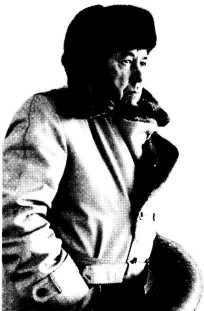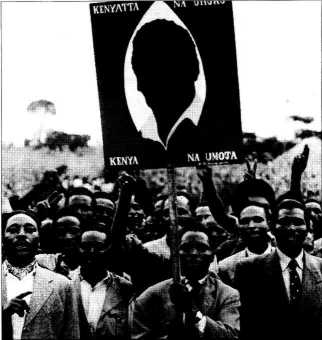
Russian novelist Alexander Solzhenitsyn
From Socialist Review, No.252, May 2001.
Copyright © Socialist Review.
Copied with thanks from the Socialist Review Archive at http://www.lpi.org.uk.
Marked up by Einde O’Callaghan for the Marxists’ Internet Archive.
|
Chris Harman retraces the link between art, politics and commitment |
 |
|
Russian novelist Alexander Solzhenitsyn |
I was one of 400 people lucky enough to hear Edward Said give a public academic lecture in late March – such is the political climate that 500 people were turned away.
The talk was supposedly about ‘postcolonial theory’. But Said soon upset some of the academics present by declaring he was not a ‘postcolonial theorist’. What followed was a long attack on much literary criticism and teaching. It was obsessed, he said, with merely formal questions and ignored the lived experience of people.
This applied equally to the proponents of traditional high culture and to the more recent adherents of post modernism. Even when adherents came from the left, they ended up encouraging forms of literature that omitted any sense of the pain and turmoil afflicting the great majority of humanity. This, he claimed, had happened to theorists in the 20th century influenced by the very abstract formulations about class consciousness in George Lukács’s History and Class Consciousness, such as the Frankfurt School of Adorno and Horkheimer, and had happened again with the postmodernists.
Said was not attacking all modernism. He contrasted someone like James Joyce with elitist modernists like Pound and Eliot. In Portrait of the Artist as a Young Man and Ulysses Joyce used modernist techniques not to abstract from the lived hopes and pains of people, but rather to give expression to them. This is ignored by orthodoxies that only want to stress the formal or linguistic elements in literature and so lump together all ‘modernists’. They end up expunging from what they deem to be ‘good’ literature any concern with how the mass of the world’s population live, feel and suffer. Language becomes divorced from reality, and the text something to be judged only in its own terms. This trend reaches its logical conclusion with those postmodernists who deny any reality outside language.
Two movements which emerged in the 1960s and 1970s threw up challenges to the cosy orthodoxies. One was the rebellion against Western imperialism of people in the Third World. African, Asian and Latin American writers emerged – and so did black writers within the US itself – who used the forms of Western literature (the novel and stage play) to challenge the assumption built into the ‘canonical texts’ of that literature. The second was the women’s movement, which challenged the secondary, passive or even non-existent role played by women in that literature.
The demand for Third World, women’s or black studies was initially a struggle against the excluding from literature and art of the experiences of the majority of the world’s people. Writers who were excluded began to break down barriers and enrich literature and art. This, Said insisted, was not the same as ‘identity politics’. This came later and tried to impose its own criteria of exclusion, an exclusion built into ‘postcolonial theory’. At a time when the peoples and cultures of the world were being drawn together and oppressed and exploited together, as never before, it sought to keep them apart.
Overall, the lecture was a devastating attack both on the old academic and literary elites and on the ‘postmodern’ and ‘postcolonial’ intellectuals who have attempted to monopolise and emasculate the literature insurgency of the 1960s and 1970s. There were, however, problems with Said’s analysis. He often spoke as if ideas are simply generated by other ideas, and not by living people having to cope with an often-hostile world. The literature and literary criticism of the 20th century were produced by people who lived through two horrific world wars, the Russian and German Revolutions, the world slump, the rise of Nazism, the Moscow Trials, the Stalin-Hitler Pact, the Holocaust, Hiroshima and Nagasaki, the Cold War, the French wars against Indochina and Algeria, the US war against Vietnam, the suppression of the Hungarian Revolution and the Prague Spring, the death squads in Chile and Argentina, and the horrors of Pol Pot’s Kampuchea.
You cannot simply take, as Said does, a text written at one point in that trajectory, like Lukács’s History and Class Consciousness (whose abstractness reflects the super-optimism of someone who had just stopped being commissar for education in a revolutionary government), and blame it for the text written, say by Horkheimer and Adorno 20 years later, after being driven into exile by the worst barbarism Europe had seen.
In fact, the real history of literature and art in the 20th century was not simply one of exclusion of the experiences of the mass of people. Successive generations of writers and artists did attempt to break out of the narrow worldview of the privileged classes in the metropolitan countries – John Dos Passos, Lewis Grassic Gibbon, Theodore Dreiser, James T Farrell, the early André Malraux, the Mexican Muralists Orozco, Rivera and Siquieros, Alfred Döblin, Victor Serge, Richard Wright, the Jean Paul Sartre of Roads to Freedom and Les Mains Sales, even William Faulkner and the Ernest Hemingway of A Farewell to Arms and For Whom the Bell Tolls. And in many cases the concern with experience led at some stage to the question of commitment – the degree to which a writer or artist should or could be politically engaged. Again and again what characterises the work of the writer is a vital tension between the need for political commitment and the inability to give artistic expression to their experiences if they were restricted simply to producing party propaganda.
The tension was not a static one. Non-artistic forces were continually changing its intensity. This was especially the case in the mid-1930s.
Optimism was snuffed out by the victory of Nazism in Germany, the high point of Stalinism in Russia, the defeat of the Spanish republicans. Those who tried to cling on to hope usually did so by attempts to identify with the Soviet regime. At one point in his lecture Said talked about the arguments between Stalinism and anti-Stalinism among the New York intellectuals as something which had always seemed an irrelevancy to him. Perhaps this was true of the way they were played out among rightward moving liberals in the 1960s. Yet the question of Stalinism is central to what happened to literature and art at a decisive period in the 20th century. For most of those trying to give expression to the forgotten voices did so by identifying with Russia just as Stalinism was also turning its back on those voices. Attempts at social realism and social modernism were suffocated by the doctrine propagated at the Stalinist writers’ congress of 1934. Officially called ‘socialist realism’, the title was as mendacious as the statistics showing supposed improvements in people’s living standards while millions were dying of hunger in the Ukraine and Afghanistan. As John Berger has pointed out, the visual art was a reversion to the court painting of a century before, with smiling, clean-faced peasants and workers feting heroically portrayed party leaders just as they had once feted kings and emperors. Those who refused to sully their pens and brushes with such output would get rejection slips from publishers and galleries if they were lucky; if they were unlucky they would end up dying in the gulag like Isaac Babel.
 |
|
The Kenyan independence movement |
The choices were not quite as barren for the ‘committed’ writers and artists in the West and the Third World. But they were still expected to confine their creativity within a framework that would embrace the Stalin-Hitler Pact one moment and Roosevelt and Churchill the next. Ralph Ellison’s modernist novel Invisible Man describes the disillusionment such twists and turns could produce for one black American writer. All too often the response was for people to turn in on themselves. Where there had been the literature of commitment there was now the literature of cynicism or despair, where there had been attempts at social realism there was now abstract expressionism. Where there had been partisan New York intellectuals, there was now the Partisan Review mutual admiration society of liberal cold warriors.
Even so, as the example of Sartre testifies, some worthwhile writing was done even in this grim period. Vasily Grossman did write about the twin horrors of Stalinism and the Holocaust in his novel about Stalingrad, Life and Fate – banned for decades in the USSR and now not deemed worth keeping in print by western publishers. Solzhenitsyn produced his three excellent early novels. The young Norman Mailer produced the best novel about the Pacific War, The Naked and the Dead, and his strange parable about the rival oppressions of the Cold War, Barbary Shore. JG Farrell delved into the impact of British imperialism. Gunter Grass used modernist techniques in The Tin Drum and The Dog Years to convey the weird experience of ‘normal’ life in Nazi Germany.
Nevertheless, Said was right to focus on change brought about by the Third World writers of the 1960s and 1970s. People like Ngugi, Achebe, Carpentier, Marquez, Rushdie, burst into Western literature and began to reshape it. They did push into it lived experience outside the magic circle of the literary elite. The gangrene soon set in again. Just as 60 years ago, the wilting of the impulse to change the world led to a wilting of the impulse to change literature and art. During the Thatcher and Reagan years the tendency in every sphere of life was for people to turn to individual solutions to what were in reality social concerns. Individual groups were left to struggle by themselves – whether the miners in Britain or the Palestinians in the Middle East – and then, when they were defeated, individual people were left to fend for themselves.
Identity politics was an expression of this. So too were postmodernism and postcolonial theory. It seemed that the only reference for any writer or artist could be the work of another writer or artist. This was encouraged by a publishing industry dominated by a handful of multinationals not over-keen to encourage relevance in writing and by rich American academic institutions that offered comfortable niches for Third World authors.
The importance of Edward Said’s lecture was that he recognised most of this and spoke out so strongly against it, even if he still mainly explained deformations in theory as a result of other theories, rather than of the harsh world of exploitation, accumulation and imperialism. He has become more radical as the years have passed, no doubt in part because of what has been happening to his Palestinian homeland. Meanwhile many of those who pay homage to Orientalism, his book of some 20 years ago, have become less radical, and try to use it to justify their retreat from engagement with reality.
My only regret was that he still does not fully recognise where his path logically leads – to the living tradition of Marxist analysis that suffered, along with literature, from the horrors of the late 1930s and the setbacks of the 1980s.
Last updated on 26 December 2009